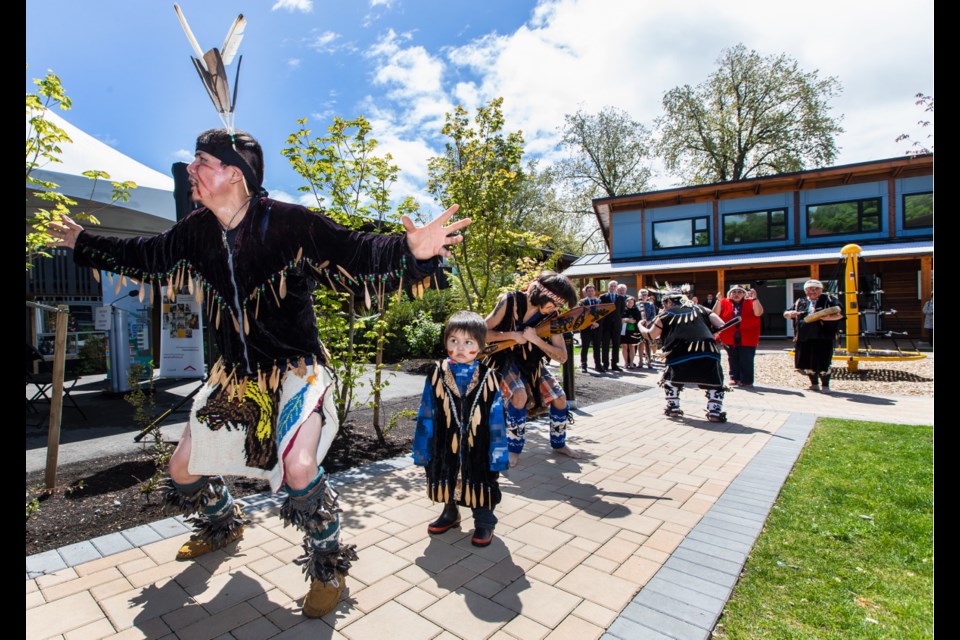A $90-million partnership among federal, provincial and regional governments will build at least 2,010 rental units over the next four years and effectively end chronic homelessness in the region, Victoria Mayor Lisa Helps said Thursday.
Helps made the comments after Jean-Yves Duclos, federal minister of families, children and social development and the minister responsible for Canada Mortgage and Housing Corporation, announced Ottawa would match $30 million investments by both the province and Capital Regional District to support housing needs in Greater Victoria.
The 2,010 units of mixed-income, rental housing will include 985 market-rental units, 625 affordable-rental units and 400 shelter-rate units for people on provincial assistance who will pay $375 a month.
“Thanks to today’s investment and our collaboration with partners at the provincial and municipal levels, we’re going to make homelessness history in Victoria,” Duclos said. “In Canada’s first-ever National Housing Strategy, our government made a commitment to reduce chronic homeless across the country by 50 per cent, and to work with partners at all levels to give more Canadians a place to call home. Today’s announcement shows those two pillars of the strategy in action.”
Greater Victoria has demonstrated innovation in leadership and in its sense of partnership, Duclos said.
“You feel how great this region works together. And the federal government is just delighted to be able to support that kind of leadership and partnership and encourage other communities across Canada to emulate the types of models that we are successfully building in this region,” said Duclos.
Helps stressed that an end to homelessness will not happen overnight. She noted that the federal money comes with strings attached, which means 30 to 40 rental buildings have to be under construction by the end of 2021.
“The idea is the money is deployed over the next five to seven years, and 10 years from now, if someone is homeless in our community, there’s a place for them to go,” Helps said.
The mix of housing is important because the higher rents will help to subsidize the lower rents and the operating costs of buildings, Helps said.
“More important, we’re not segregating people. If someone is coming off the street and they have shelter assistance, they get to live in the same building as someone who can pay market rates.”
Island Health will provide health supports to tenants if required.
Selina Robinson, B.C. minister of municipal affairs and housing, noted that the partnership will create the right mix of affordable-housing opportunities, delivering homes that low- and middle-income people can afford, while making sure people in greatest need have access to safe, secure housing with the right support services to help them succeed.
“Housing affordability and availability is a critical issue in the capital region, and it requires a strong regional response,” said CRD board chair Steve Price.
“The CRD is thrilled that both the province and now the government of Canada have joined in this important effort to significantly impact homelessness in the region and allow us to deliver more critical housing units. I am delighted to stand with our provincial and federal partners as we see the benefits of working together and the outcome that can happen from that collaboration.”
The CRD will need cooperation from all levels of government and from residents, said Price.
“People have to be willing to allow a little extra density to help people in need,” he said. “This is critical work we are doing.”
Two projects have already received provisional approval.
Island Women Against Violence has proposed the development of 50 new affordable-housing units at its Croftonbrook site on Salt Spring Island. Of these, 18 will be provided at shelter rates to people who can live independently with supports.
The Cool Aid Society has proposed the redevelopment of a 21-unit supportive housing project at 210 Gorge Rd. East. The 82-unit project will include 50 affordable-rental units and 32 shelter-rate units.
The announcement was made at SiemLelum on Gorge Road, a 41-unit affordable-rental housing development for Indigenous people at risk of homelessness.
B.C. Housing and the CRD are trying to buy land already zoned for multi-unit residential. They will work with developers to negotiate the purchase of projects ready for construction or under construction, to be owned and operated by the CRD and Capital Region Housing Corp.
Helps predicted there will be lots of rezoning in the years ahead. “We’re kidding ourselves if we think this is going to be an easy process,” she said.



